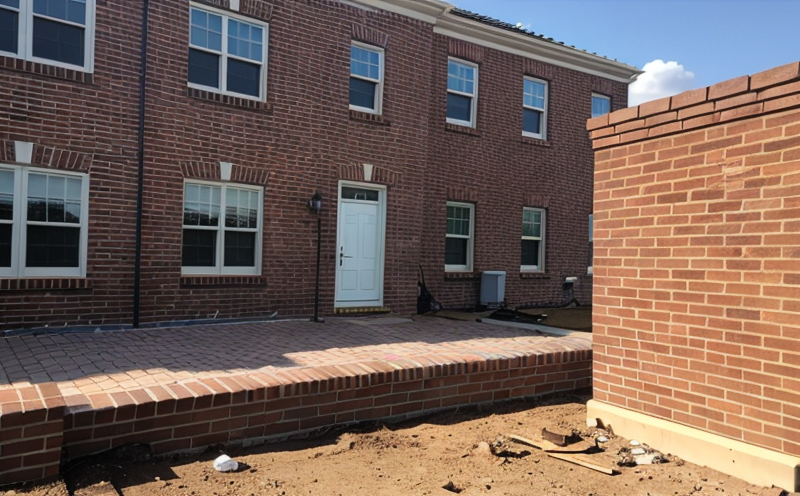EN 771 Thermal Conductivity Measurement of Bricks
The European Standard EN 771-4 specifies the procedure for determining the thermal conductivity, λ (lambda), of bricks and similar materials. This method is crucial in ensuring that building materials meet the necessary performance criteria in terms of energy efficiency and durability, which are increasingly important considerations in modern construction.
The thermal conductivity measurement evaluates how well a material can transfer heat through it under steady-state conditions. For bricks, this parameter directly influences their insulating properties, making accurate testing essential for compliance with building codes and standards that prioritize energy conservation.
Testing according to EN 771 ensures consistency in the quality of construction materials across different regions and suppliers. It allows stakeholders such as architects, engineers, and builders to make informed decisions about material selection based on reliable data rather than assumptions or less precise methods.
The standard involves subjecting a standard brick specimen to controlled environmental conditions before measuring its thermal resistance using a guarded-hot plate apparatus. This procedure accounts for various factors that might affect the measurement accuracy, including humidity levels and surface temperatures.
Understanding the implications of these tests is vital for those involved in quality assurance programs within construction projects. By adhering strictly to EN 771 procedures, organizations can demonstrate their commitment to sustainable practices while also enhancing safety by ensuring that all components used meet stringent performance standards.
The results obtained from this test play a significant role not only during the design phase but throughout the entire lifecycle of a building project. They help identify potential issues early on so that necessary adjustments can be made before construction begins, thereby reducing costs and improving overall project outcomes.
Scope and Methodology
The scope of EN 771-4 encompasses the determination of thermal conductivity (λ) for bricks intended for use in building constructions. It provides detailed instructions on preparing specimens, setting up and operating the guarded-hot plate apparatus, reading the instrument readings accurately, and recording data properly.
- Preparation of a standard brick specimen according to ISO 10279 or equivalent standards
- Setting up the guarded-hot plate apparatus in accordance with EN ISO 8301-1
- Controlled environmental conditions ensuring relative humidity between 5% and 65%, temperature ranging from 10°C to 40°C
The methodology described here focuses on achieving stable thermal equilibrium between the test specimen and surrounding air before initiating measurements. During testing, careful attention must be paid to maintaining consistent conditions throughout each measurement cycle.
Accurate results depend heavily upon precise control over all variables involved in this process. Compliance with these stringent requirements guarantees reliable data suitable for making critical decisions regarding material selection and application.
Customer Impact and Satisfaction
Implementing the EN 771 thermal conductivity measurement ensures that clients receive high-quality products tailored to their specific needs. When specifying materials based on accurate test results, architects can design buildings with improved energy efficiency and reduced environmental impact.
For compliance officers, following this standard provides assurance that all supplied bricks comply with relevant regulations and industry best practices. This helps prevent costly errors or delays caused by non-compliant materials entering the supply chain.
R&D engineers benefit from having access to standardized testing protocols which enable them to compare different types of bricks under identical conditions, facilitating innovation in material science.
Procurement teams gain confidence knowing that suppliers are adhering to rigorous quality assurance processes. This leads to more robust supplier relationships built on trust and mutual respect for high standards.
Use Cases and Application Examples
- Residential Construction: Ensuring that walls meet desired R-values enhances comfort levels inside homes while minimizing energy costs over time.
- Commercial Buildings: Large-scale projects requiring extensive insulation benefit greatly from knowing precise thermal properties of materials being used.
- Sustainable Architecture: Architects aiming to incorporate passive heating and cooling strategies rely on accurate data about material performance.
- New Construction Standards: Governments implementing updated building codes often require compliance with EN 771 as part of certification processes.
In addition to these examples, many retrofit projects also utilize this testing method. By assessing existing walls or floors, contractors can determine whether additional insulation is needed without removing the original structure.





